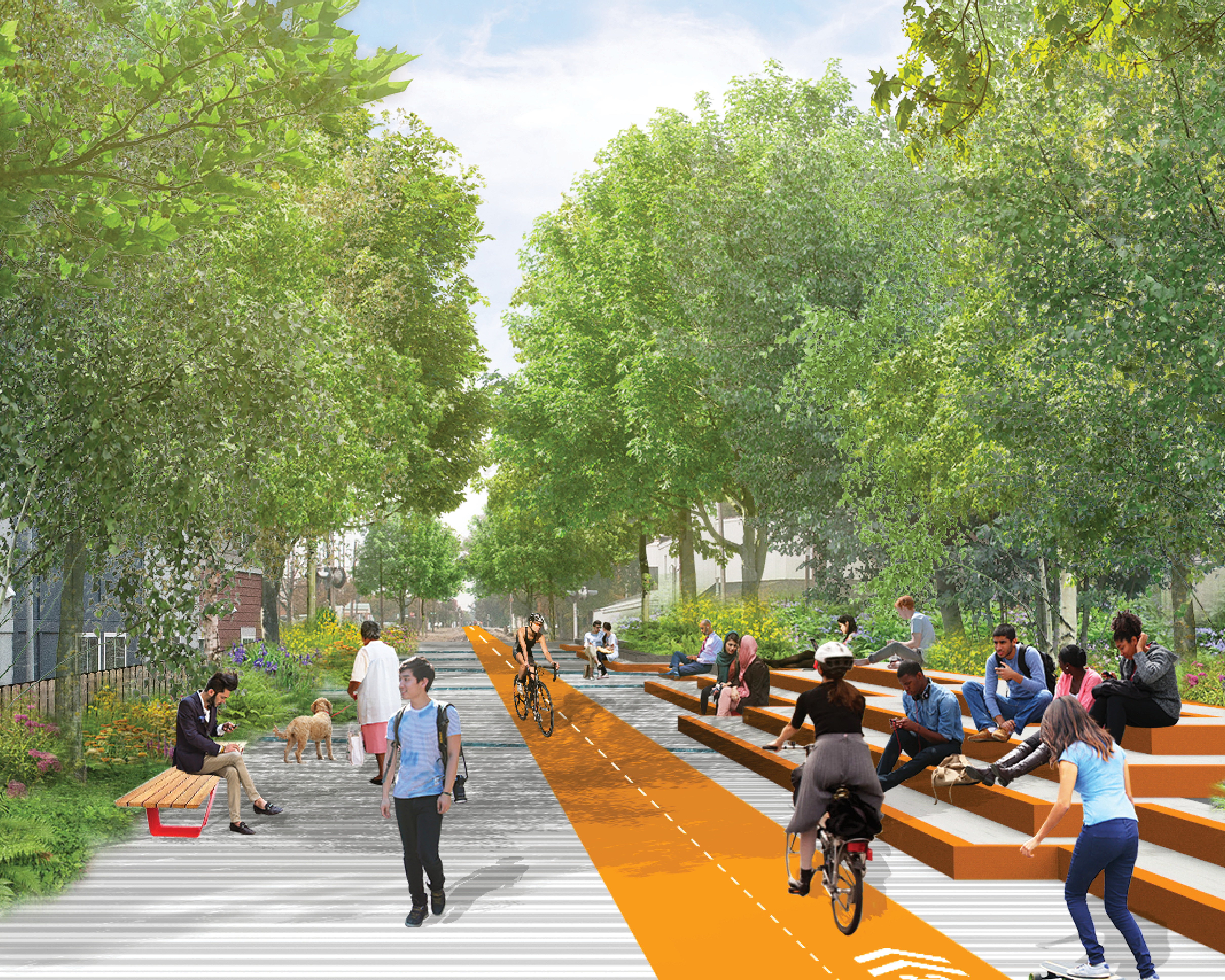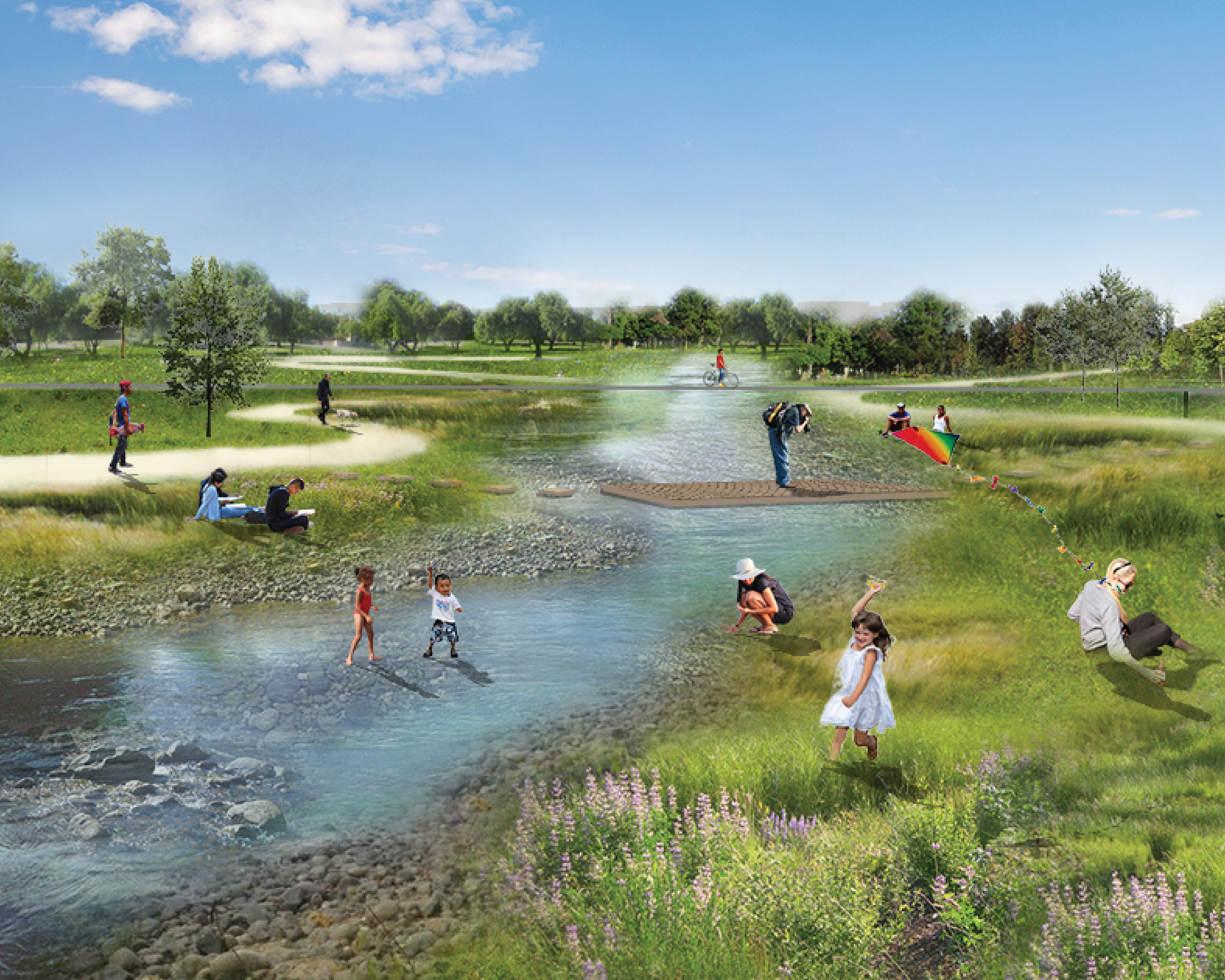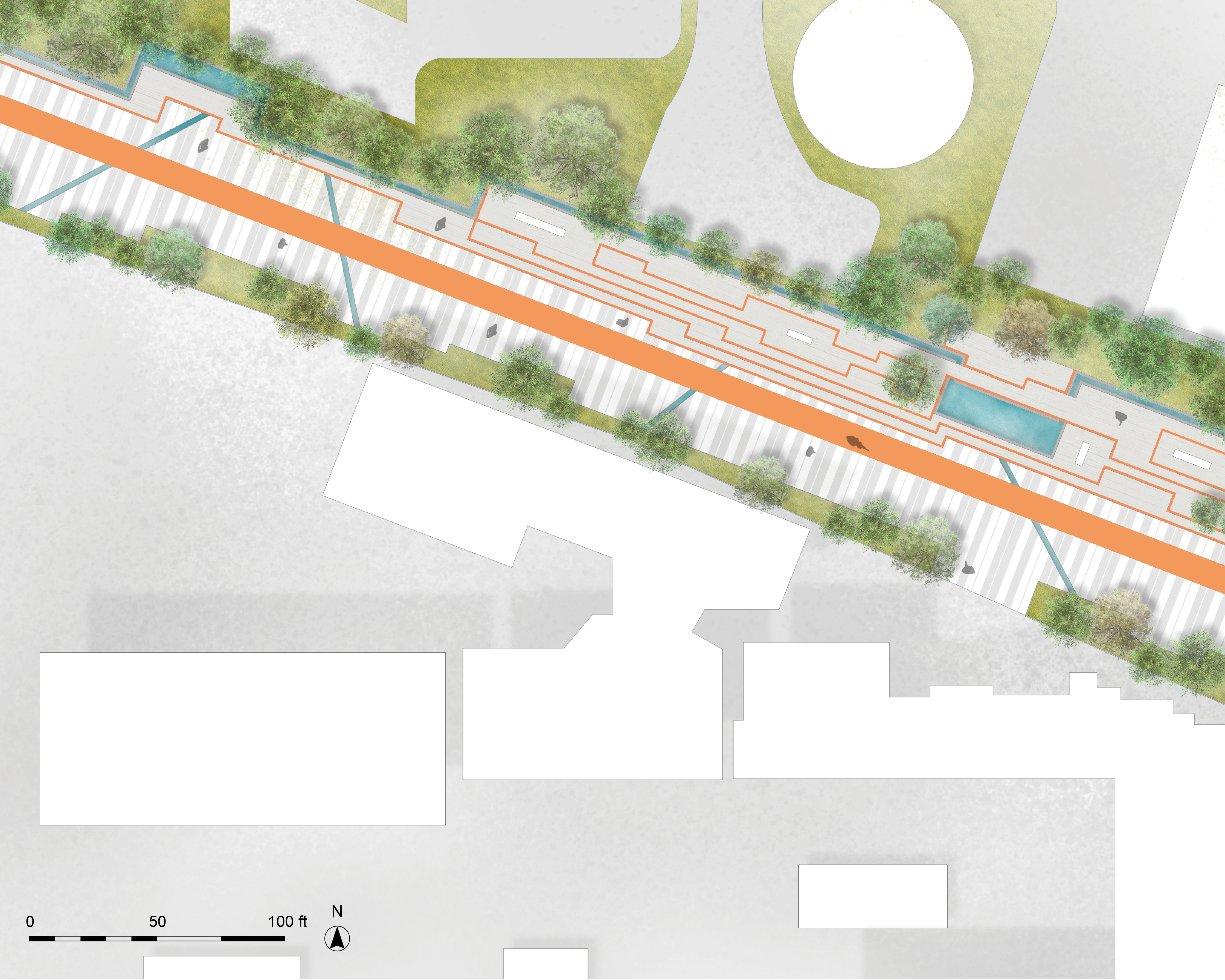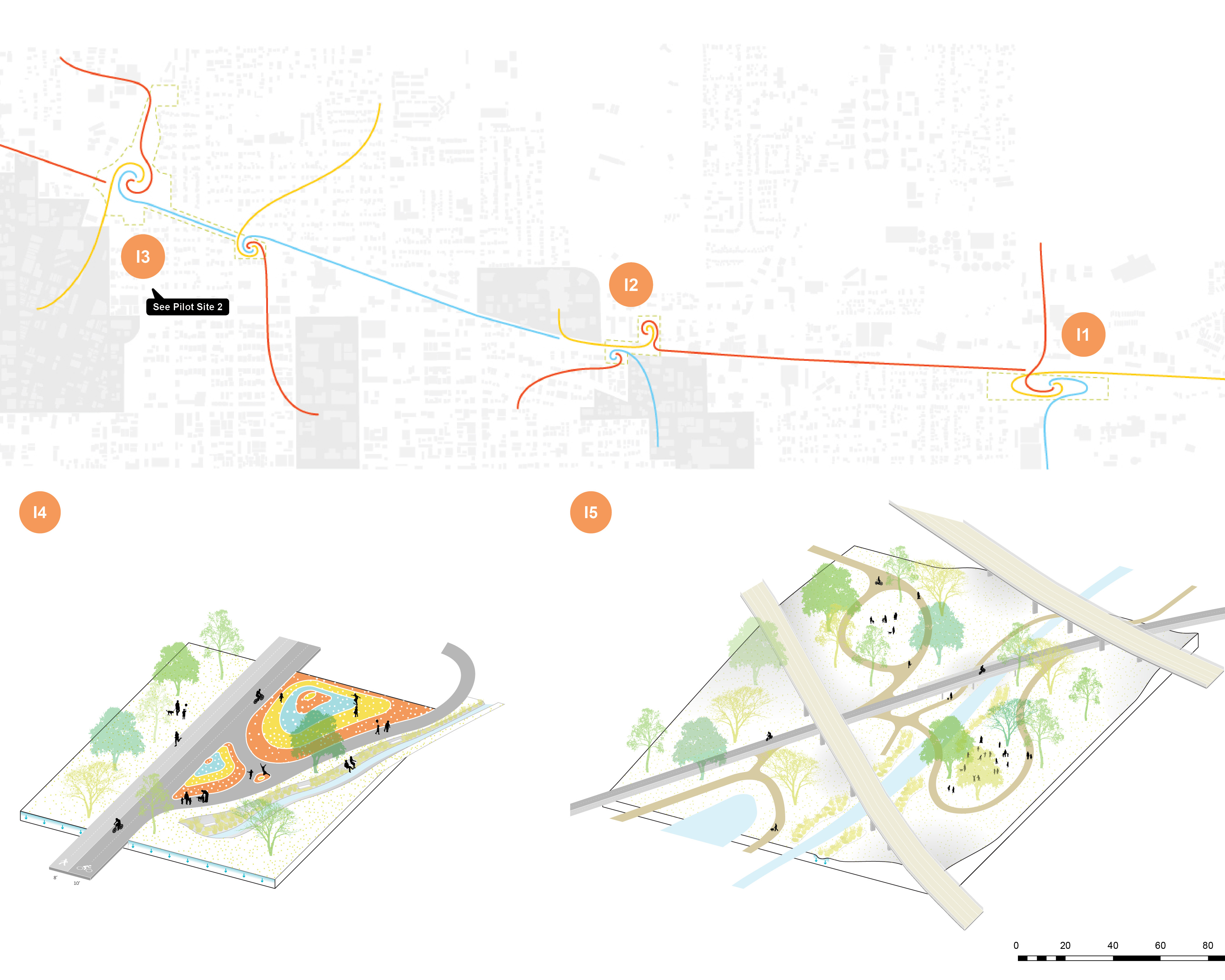Award
2018 Student Merit Award
Site
Urbana Champaign, IL
Category
General Design - Graduate Project
Landscape Architects
Project Details
Since its opening in August 2017, the first 6.7-mile section of the Kickapoo Rail Trail (KRT) in eastern Illinois has proven its critical role in linking several communities, starting with Champaign-Urbana and St. Joseph. The converted rail-trail not only offers residents the opportunity to stay immersed in nature while being physically active but also serves as crucial habitats for native wildlife. Continuing the spirit of the KRT, this project aims to extend its connective function and other positive impacts westward, from its current terminus near Walmart Urbana through downtown Urbana to Lincoln Avenue and beyond.
The proposed segment possesses the distinct characteristic of traversing several urban and highly populated neighborhoods, unlike its existing counterpart which mostly parallels agricultural fields. This inspires the concept of the whole project: Convergence, speaking to the idea of attracting people and wildlife from surrounding areas to the site and thus encouraging interaction among these diverse actors. If realized, the rail-trail extension will not only become an economic driver for local businesses in downtown Urbana but will also provide an alternate mode of transport for residents, promoting a healthy and sustainable lifestyle. In addition, it will continue the completed KRT’s ecological role as natural habitat for wildlife, yet perhaps in a more significant way because of its urban character.
Despite these opportunities, the site has fallen into disuse due to its inadequate infrastructure and uninviting, even unsafe, appearance. At the same time, it frequently experiences flooding, which bears a more serious problem as runoff from the track can carry creosote—a mixture of chemicals utilized to preserve wood that is highly toxic—to nearby waterways.
Responding to these potentials and constraints, the project organizes its interventions under three primary themes: Fluidity, Interaction Zones and Dynamism. Fluidity refers to both the ease with which one can access the trail from other parts of town and the smooth movement throughout the trail. This typology serves as the first step to facilitate convergence as it aids with users’ flow in and out of the site, thus promoting more interaction among different groups. Interventions to accomplish this objective mostly hone in on the site’s intersections with strategies such as raised paths, intersection markings and indicators.
Interventions within the Interaction Zones theme are at the heart of the project’s concept as they take place at large open spaces where multiple groups can gather. Specific interventions correspond to the distinct demographics, activities and institutions of surrounding neighborhoods to bring character to the site while ensuring to benefit local communities. Interventions vary from introducing new programs to adding amenities along the site for more interesting experiences to address the unsafe perception. Lastly, the Dynamism theme deals with the spaces in between Interaction Zones. By introducing various landscapes and spatial experiences, interventions serve to continuously evoke a sense of curiosity and desire to explore among users.
Throughout the trail, the project proposes incorporating rainwater management elements such as street bioswales and rain gardens creatively to reveal their exciting operation to users. Specific vegetation for each planted area will adjust according to surrounding areas to best link habitat patches across the site, making it truly function as an ecological corridor.




